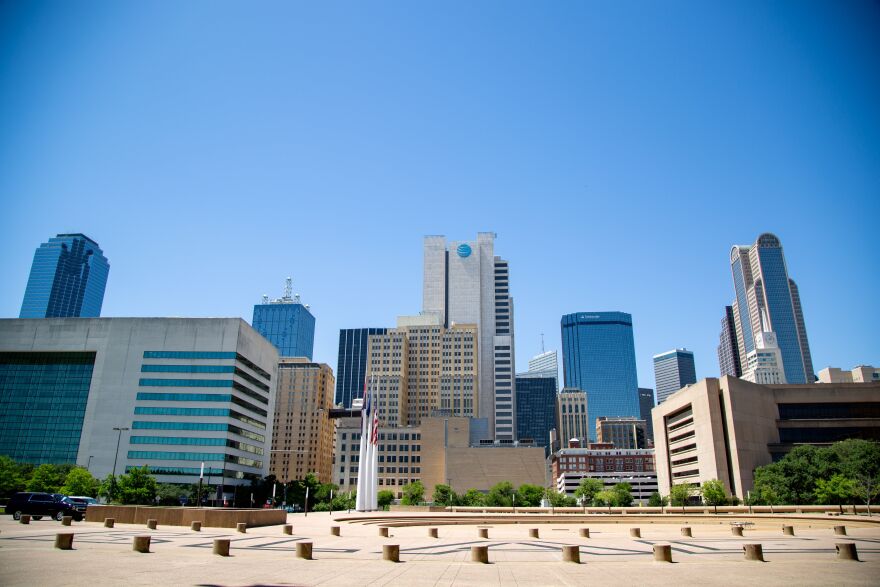As the extreme heat persists throughout North Texas, researchers are learning more about the adverse impacts of urban heat islands.
That’s the effect that hard surfaces like buildings and streets in cities can have on increasing warming temperatures.
KERA’s Pablo Arauz Peña spoke with UT Dallas researcher David Lary, who’s studying the impacts of heat islands and how to mitigate their effects.
We've been hearing a lot about heat islands in recent weeks. Dallas is one of more than a dozen cities working with the National Oceanic and Atmospheric Administration to map urban heat islands. Can you explain what exactly heat islands are?
When we have a lot of surfaces, such as concrete tarmac, in place of vegetation and trees and so on, they store during the day the sun's energy that comes in. At night, they then give out this radiation. So the result of this is that the temperature of the ambient atmosphere that we may find in an urban environment that has very few trees can be considerably warmer than the surrounding rural areas.
Does that mean that say, if I'm in downtown, sometime, you know, in the late evening, that the temperatures are actually warmer than they should be?
They will be warmer than they would otherwise be. So yes, definitely, because it's like a energy balance, you would expect that when we have the energy source, reduced, i.e. the sun is now below the horizon and are streaming in that heat, that things would cool down much more, but it's because the built surfaces are reradiating, releasing that heat they'd been storing during the day. So it's not as cool as it would otherwise be. And we can help that by planting more trees, especially native trees that will be able to establish themselves in the environment and flourish there.
How has climate change exacerbated the problem of heat islands?
This year has been quite a year for records. So we have right now the warmest July on record. That's not just for the land surface globally, it's also for the ocean. And we just passed the sort of landmark figure of one and a half degrees of warming of the global average temperature related to the pre-industrial times.
You talked a little bit about how urban communities can mitigate the effects of urban heat islands by planting native trees. But what are some other examples? What are some other things that that communities can do to mitigate these effects?
On the very hyperlocal scale, we have much more control over what our local environment is, supposing if it's our yard, say planting things there, or as a community or as a town. So on the very local level, we can help by reducing the heat island, as we mentioned, by what we plant, so just reducing that paved area in favor of the extra native trees. So then we have more shade, we have, it's more pleasant to walk through, we have more evapo-transpiration, which will then cool as the water evaporates and turns into vapor, it causes the cooling of the air.
Got a tip? Email Pablo Arauz Peña at parauzpena@kera.org
KERA News is made possible through the generosity of our members. If you find this reporting valuable, consider making a tax-deductible gift today. Thank you.



